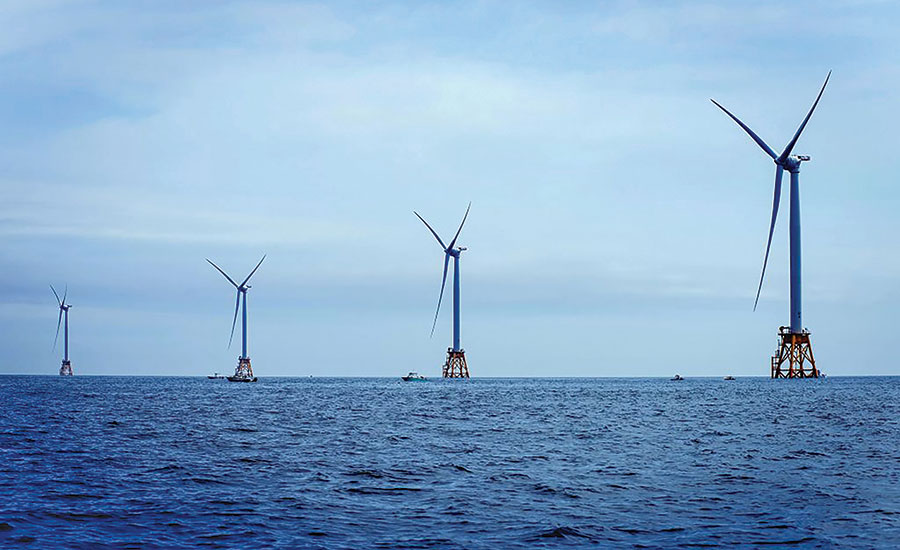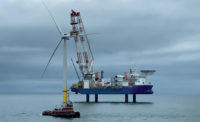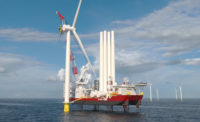Vineyard Wind, the 800-MW offshore Massachusetts wind energy project that is set to be the first and largest to commercially operate in the U.S., now may be just 30 days from final federal approval for construction after Trump Administration delay.
The U.S. Interior Dept.’s Bureau of Ocean Energy Management said March 8 it finished the project’s final environmental impact statement. Other projects are also moving as the Biden Administration and Democrats in Congress push clean-energy agendas.
“More than three years of federal review and public comment is nearing its conclusion and 2021 is poised to be a momentous year,” says Vineyard Wind CEO Lars Pedersen.
Major site work on the project, set to gain its final record of decision possibly in mid to late April, would start soon and finish by mid-2024.
The new updated project schedule begins with construction of onshore export cables this quarter, with substations in quarter three. Turbine installation would start in second quarter 2023. Vineyard Wind plans to use New Bedford, Mass-based vessels and vehicles for construction, operation and maintenance. Project review was temporarily delayed by the developer’s decision to use GE’s giant Haliade-X turbines, which range in capacity from 12 MW to 14 MW.
The quick environmental analysis since BOEM restarted Vineyard’s review on March 3 reflects President Joe Biden’s goal to double offshore wind production by 2030.
Debra Haaland was approved to be Interior Secretary on March 4 by a U.S. Senate Energy and Natural Resources subcommittee’s 11-9 vote. Support of Republicans Lisa Murkowski of Alaska and Susan Collins of Maine, as well as key Democrat Joe Manchin of W.Va. will likely push her through full Senate approval despite other Republicans' hold on the nomination.
Haaland and Energy Secretary Jennifer Granholm will be key players in Biden’s goal to cut power sector carbon emissions by 2035. The latter has said that up to $40 billion in loan guarantees will be available for clean power projects including wind, solar and hydro. Michael Regan also was US Senate confirmed on March 10 as U.S. Environmental Protection Agency chief, in a 66-34 vote that included approvals from 16 Republicans.
Amanda Lefton, named BOEM director on Feb. 5 and formerly New York’s energy and environment secretary, promised "an expeditious process" to permit pending projects.
BOEM is developing a final EIS for the 132-MW South Fork Wind project off Long Island, N.Y. Developers Orsted and Eversource have committed to a $10-million training center and using contractors who have project labor agreements with the Nassau-Suffolk Building and Construction Trades Council.
But completion of Orsted’s 120-MW, $720-million Skipjack project off the Maryland coast now is delayed until 2026, with the firm citing new political and and logistical difficulties in finding a suitable land route for its transmission cable.
Meanwhile, Democratic leaders of the House Energy and Commerce Committee introduced a bill March 2 that requires all retail power suppliers to obtain 100% clean electricity for customers by 2035.
It gives the U.S. government authority to build out the electric transmission system and creates a new White House Office of Energy and Economic Transition to coordinate programs to support workers and communities affected by the transition to net-zero emissions.





Post a comment to this article
Report Abusive Comment